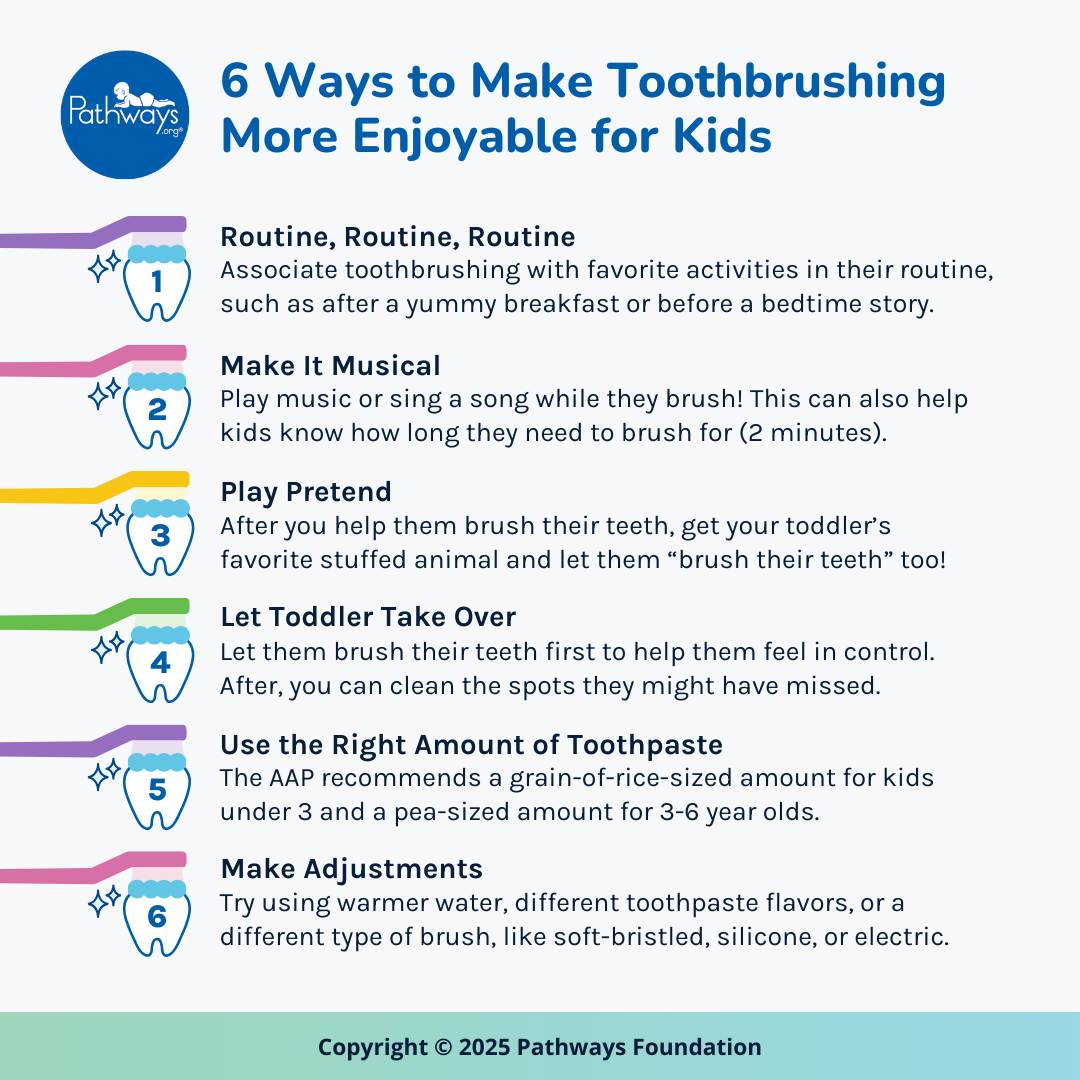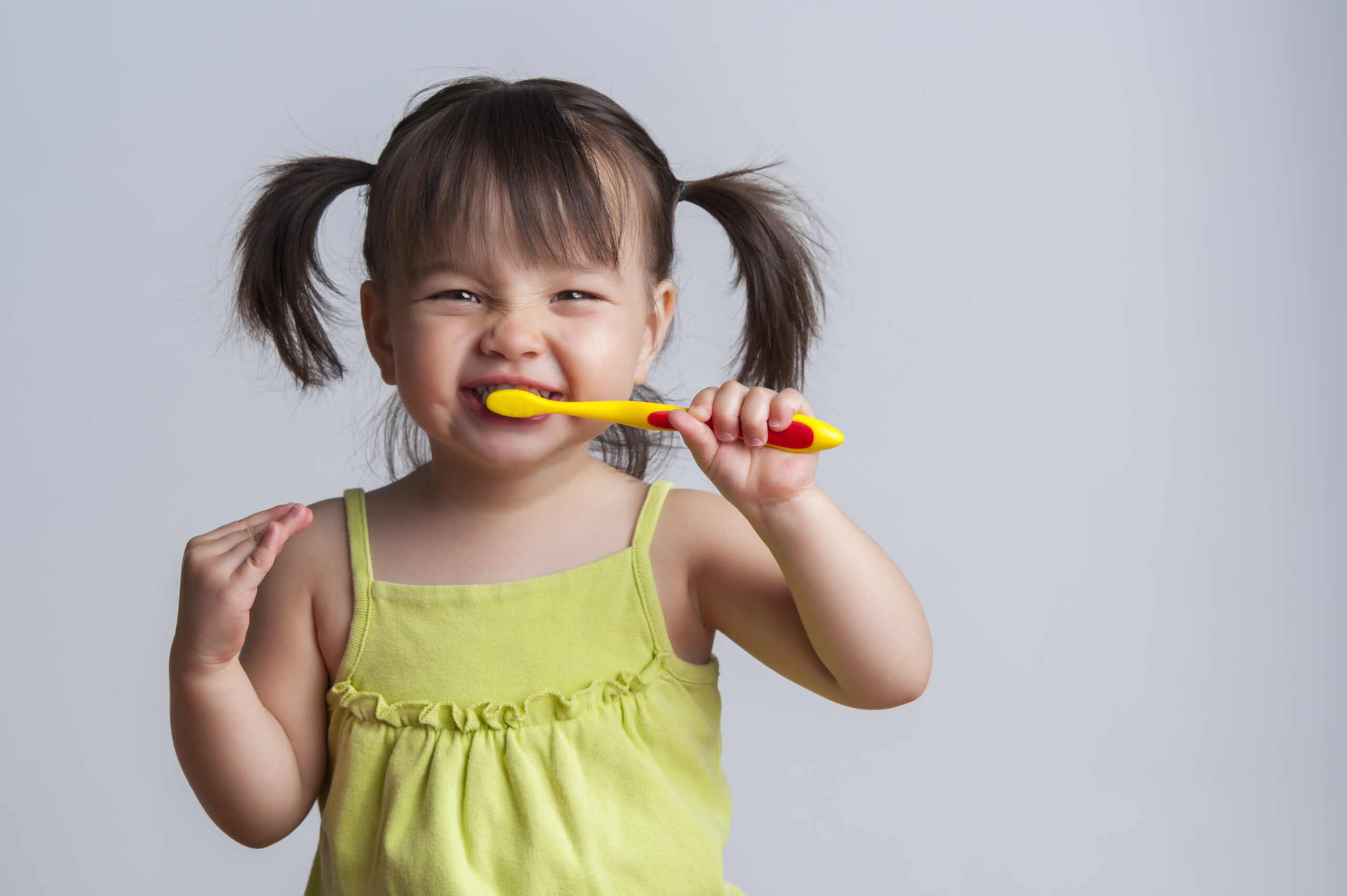6 Tips to Help Kids Brush Their Teeth
- It’s common for kids to not like brushing their teeth, but there are many ways you can help make this daily task more enjoyable!
- Little kids may be more likely to brush if you use music, play pretend, or let them go first before you get the spots they miss.
- It can be helpful to make adjustments to the water temperature, toothpaste, or toothbrush your kid uses, especially if they have sensory issues.
Whether it’s the shock of cold water hitting their teeth, the smell or taste of the toothpaste, or the idea that brushing their teeth is something they “have to” do, we may never know why children try to avoid brushing their teeth. What we do know, however, is many children Just. Don’t. Like. Brushing. Their. Teeth. Brushing teeth is an important daily habit and the sooner kids get used to it, the easier it will be to keep their pearly whites healthy and clean.
Dentists? Brushing? Feeding? Here is what to expect when Baby’s teeth come in.
Plus, 5 ways to make going to the dentist fun!
Tackle toothbrushing with kids using these 6 easy-to-follow tips:
1. Routine, Routine, Routine
As soon as Baby’s first teeth come in, toothbrushing should become part of their daily routine. Explain to your child that toothbrushing needs to happen every morning (before or after breakfast) and every night after milk or food to keep their teeth healthy and clean. When talking about toothbrushing, it can help to pair it with a favorite activity, like after eating a yummy breakfast or before their bed time story. This will help your child associate toothbrushing with something they enjoy in their daily routine.

2. Make It Musical
Playing music while brushing teeth adds a calming and enjoyable sensory component to this task. Music can also be used as a timer so your child knows exactly how long they need to brush for (2 minutes is recommended!) You can even try using a musical toothbrush! Your child can press play themselves, start brushing when the music starts, and finish when the tune ends. Otherwise, sing a song to keep them brushing and make it a little more fun!
3. Play Pretend
After you’ve finished brushing your toddler’s teeth, use pretend play to teach them more about toothbrushing. Tell them it’s their turn to do the brushing. Grab their favorite doll or stuffed animal and have your child “brush their teeth” to keep dolly’s teeth healthy too! But remember, toothpaste is required for your child, not the doll!

4. Let Toddler Take Over
If your child is at an age where they want to do everything themselves, let them do the brushing first. This helps give them some control. Be sure to watch them carefully so you can hit the spots they missed after they’re done. You can also watch to see if they move the brush up and down, left and right, or in circles and mimic that pattern to make the experience more comfortable for them once you take over.
Bonus tip: Have them “help” with your toothbrushing. Model toothbrushing at the same time they need to brush, and take turns brushing each other’s teeth.
5. Use the Right Amount of Toothpaste
The American Academy of Pediatrics (AAP) recommends using toothpaste the size of a grain of rice for children under 3 and the size of a pea for children 3-6 years. The AAP also recommends toothpaste with fluoride. Make sure to supervise your child since toothpaste with fluoride is not meant to be swallowed.
6. Make Adjustments
Brushing teeth can be especially difficult for children with sensory issues. If your child struggles around toothbrushing time, a few small changes can make the experience more enjoyable.
- Try using warm water! The shock of cold water can be a bit off-putting and a simple adjustment of temperature could make all the difference.
- Change the toothpaste flavor. Try fruity, mint, and unflavored. Sometimes dentists will offer patients samples or you can get travel sized tubes of toothpaste while you’re testing out what your child likes best.
- Experiment with different brushes. You can start off by using a washcloth to help your little one get used something touching and cleaning their teeth. Then, try a soft-bristled brush or silicone toothbrush. Electric toothbrushes can also be nice because the consistent motion is calming for some kids.
For young children, it always helps to turn daily tasks into fun games! Try out these tips and let us know what works for your child!
Check out what else to expect from your baby. Follow their milestones here!
- 0-3 month milestones
- 4-6 month milestones
- 7-9 month milestones
- 10-12 month milestones
- 13-18 month milestones
- 19-24 month milestones
- 2-3 year milestones

